Borjomi-Kharagauli National Park is the oldest national park of Georgia and the first established after the fall of the Soviet Union. With a size of 104,933 ha, it is also one of the country’s largest national parks, covering more than 1.5% of the whole territory of Georgia. Many people visit Borjomi-Kharagauli, as it encompasses one of Georgia’s last major intact forest wilderness, and provides refuge to many of the Caucasus´s rich wildlife, such as brown bear, wolf, chamois, lynx and red deer. However, it has also been under serious pressure of poaching and illegal logging, and its rangers often put their life at risk while patrolling the national park.
It has been chilling to hear about the difficult situation post-Soviet Georgia was in throughout the 90s, and Borjomi-Kharagauli National Park was founded during those very challenging times. Nowadays, the efforts to protect this unique biodiversity are intensified, and Borjomi-Kharagauli National Park has become a role model for Georgia and the whole Caucasus.
The early days were challenging
Established as a royal hunting reserve in 1880, Borjomi’s rich biodiversity was decimated by the early 1900’s due to hunting. The area was designated as a nature reserve in 1935, however, local residents still continued to hunt in and around the national park. In the economic collapse of post-Soviet Georgia during the 90s, poverty and hunger swept through the country. At this time ways to generate public income were very limited and many families did not have electricity and central heating in their houses. “The first time I saw artificial light coming from a lightbulb was in 2005” the words of Giorgi from the NGO SABUKO ring in our ears. Under these difficult circumstances, the country’s natural values were seen by many as a resource to be plundered, rather than to be preserved.
It was in 1995 that with support from WWF Germany and the German government, Borjomi-Kharagauli National Park was founded, as the first national park in the country. “Local poverty and the lack of park infrastructure or sufficient funding were huge challenges in those early days” explains Natia Muladze, head of the administration division. “The lack of resources made it challenging to enforce laws even inside national parks. Everyone had a gun and everyone went hunting. To gather firewood to heat their home, people cut down trees. Those were difficult times.” The national park staff didn’t have regular salaries, locals were very critical towards the national park administration and rangers had to put their lives on the line while doing their work.


Nino Avetisian, visitor specialist (left) and Natia Muladze, head of administrative division (right) explain to us the national park´s zonation and visitor infrastructure.
Numbers of red deer were at their all time low at 38 individuals. However, the passionate people of the national park continued, and the unique biodiversity of Borjomi has seen a great comeback. According to Natia, the red deer population is between 500-800 individuals nowadays, and the populations of other key species, such as large carnivores, are regularly monitored by NACRES and the rangers.




Wildlife tracks, such as brown bear and wolf tracks are well visible and easy to encounter in the national park during winter.
Protection in a sea of opposing viewpoints
Meanwhile, the national park has undergone zonation. In 30% of the park´s territory, traditional land use, such as livestock grazing, is allowed. Around 50% of the area is open to visitors through 300 km of marked trails. However, visitors are not allowed to leave the trails at all, which means that about 50% of the park in fact is preserved without human disturbance, as wilderness.



Views from the trail.
However, there are still eight municipalities surrounding the national park, and it is not always easy to involve all stakeholders in discussions and decision-making. In fact, Natia considers this one of the biggest challenges the national park administration faces. “Some people still don´t understand or accept the national park. They didn’t understand why we had to protect nature. Over time and with the development of ecotourism, by now many of them understand that there are many ways they can benefit from the forest.”
Nevertheless, the national park still needs to employ over 50 rangers who take care of infrastructure maintenance, law enforcement, tourism and education. Of this, law enforcement is clearly the most challenging part of the job. Although national park rangers are nowadays better equipped and trained, illegal logging, poaching and forest fires still remain the main threats they face while patrolling and protecting the park´s biodiversity. Rangers have been injured and threatened when trying to enforce the laws, and one ranger was killed by poachers.
The mutual benefits of ecotourism
Borjomi-Kharagauli National Park has become one of the most visited natural sights in Georgia, and that is thanks to its well-developed ecotourism activities. In the mid-2000s, the park administration started developing its ecotourism infrastructure with funds from the Caucasus Nature Fund. They aimed to involve local communities in tourism development, providing an alternative source of income for them and ultimately, bringing mutual benefits to both the park and small tourism businesses.
Ecotourism helps provide local communities with an alternative livelihood, and in just 6-7 years, ecotourism really kickstarted here. Today, about 65.000 visitors annually come to see the park´s breathtaking views, and about 60% of those are domestic. The park administration has very successfully capitalised on the natural potentials of the area, and by now, tourists can do horseback riding, mountain biking and even snowshoeing here. For hikers, twelve trails and seven wooden mountain huts create the possibility to disappear into nature for days, following tracks of diverse wildlife and enjoying stunning views. We know, because we tried ourselves, and had some of our best experiences in Georgia here in Borjomi.





The mountain huts are simple, self-service huts, with prior reservation necessary at the visitor centre.
Four days lost in wilderness
The four days we spent in the winter wilderness of Borjomi-Kharagauli took us through rich evergreen forests, alpine meadows and snowy high mountain peaks, while giving us a few new lessons on survival. When we arrived, we were informed by the visitor specialist that most of the trails are covered by snow and thus not opened. Therefore, we decided to start on the open trail and see for ourselves what the conditions are in higher altitudes. Knowing ourselves though, we had a feeling we won’t be able to resist continuing. In the following days we had the most amazing winter hike, being the only humans around and following wolf and bear tracks for hours.
Throughout these days we crossed four official trails, although in high altitudes we were not able to see them under the knee-deep snow we were battling through. We crossed rivers and creeks at times smoothly and other times having walked away a bit wetter than before. We advanced our skills of making a campfire with wet wood, built fires and heated up rocks to dry out our wet shoes and socks. We camped in temperatures below -10°C, had our shoes and toothbrushes freeze overnight, and spent two long and cozy evenings in the national park´s mountain huts.
These harsh winter conditions made the hike challenging, but even more enjoyable. We were pushed outside of our comfort zones once again while making our way through dense forests and across snowy ridges, in places where humans are only visitors and do not stay. On the last day on our way down, after following in the footsteps of deer for two hours before, we finally saw one majestic red deer on the slope beneath us. We said our farewells to this forest with backpacks empty of food and minds full of unforgettable memories.


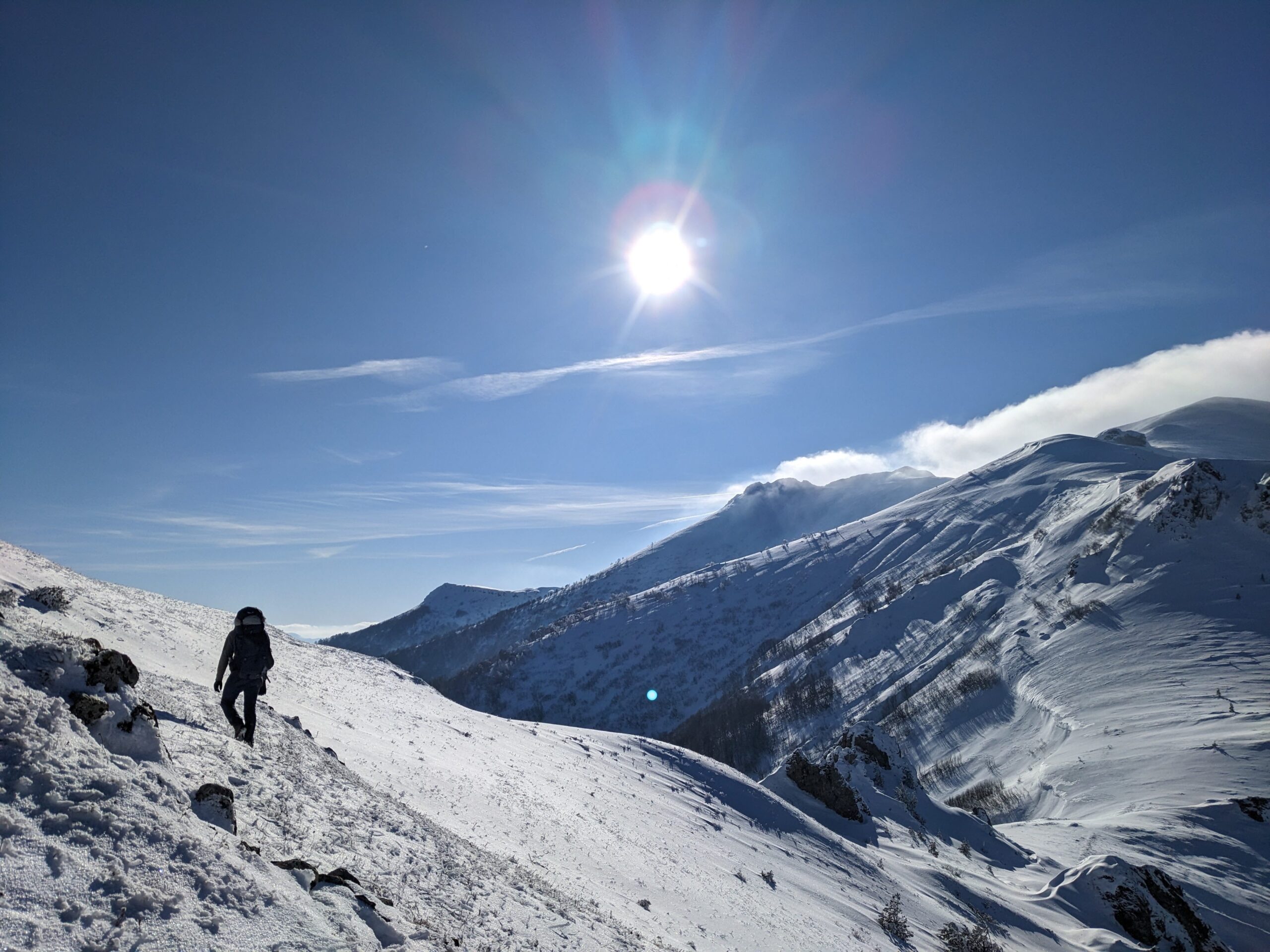
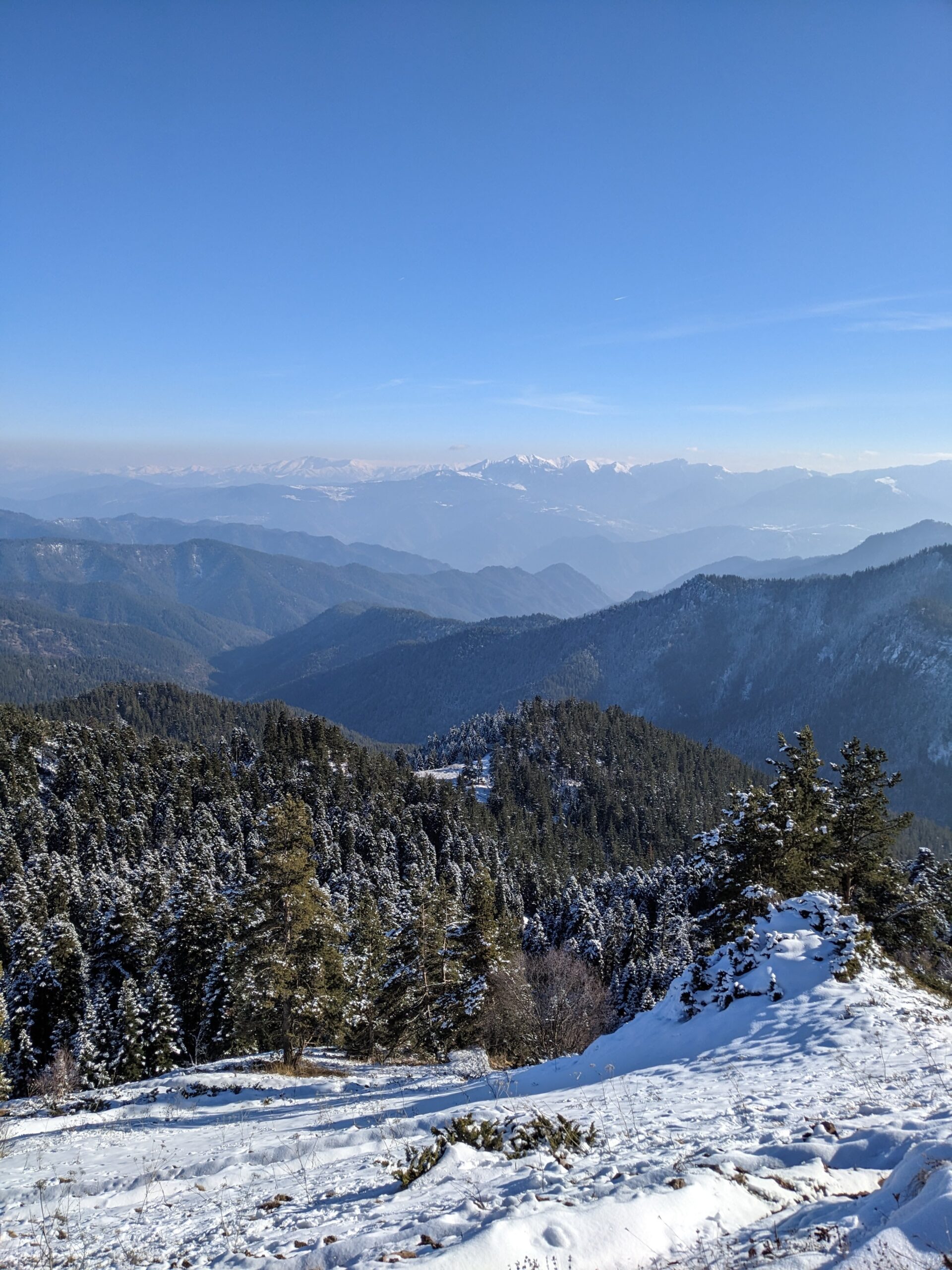


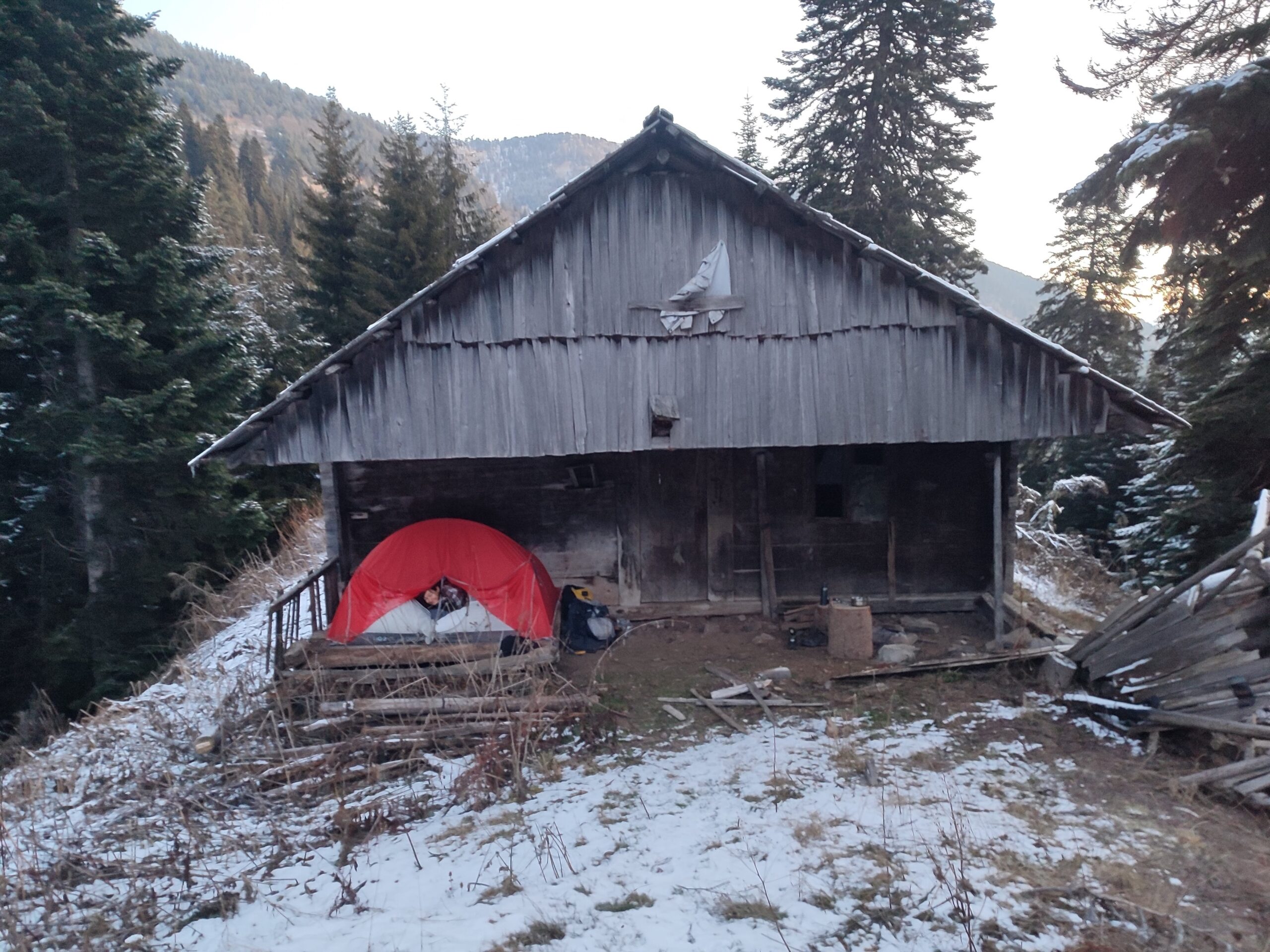
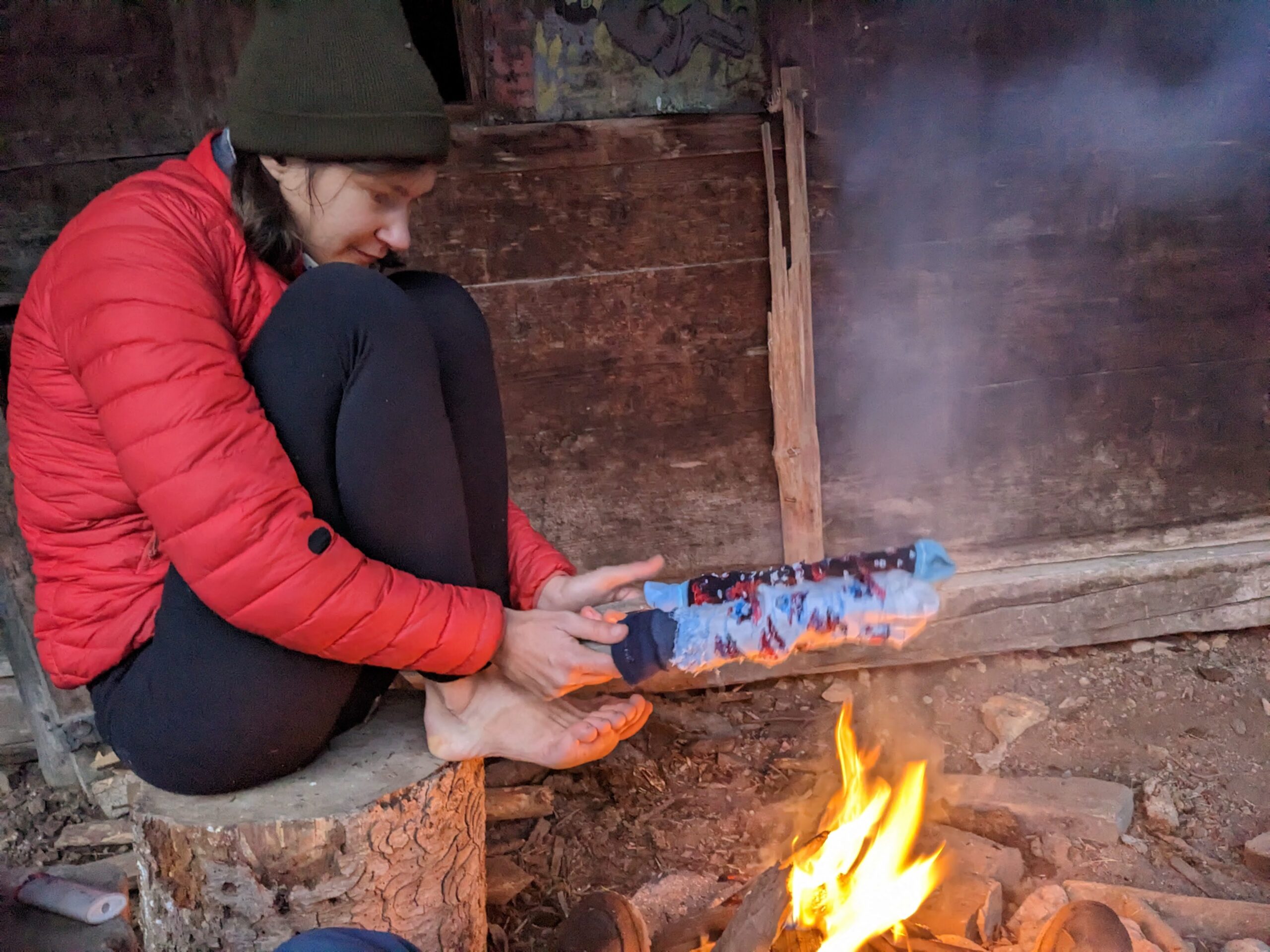
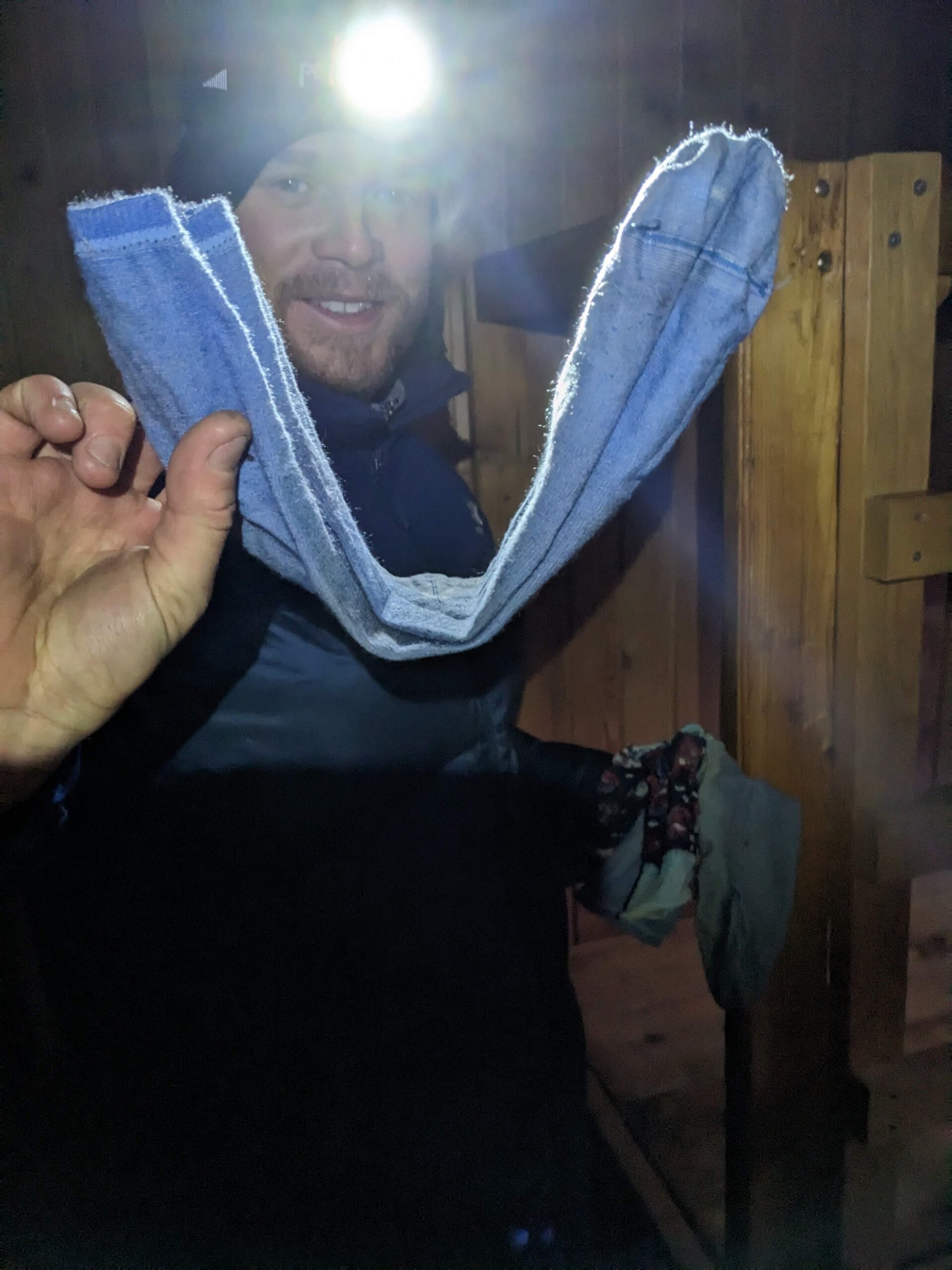

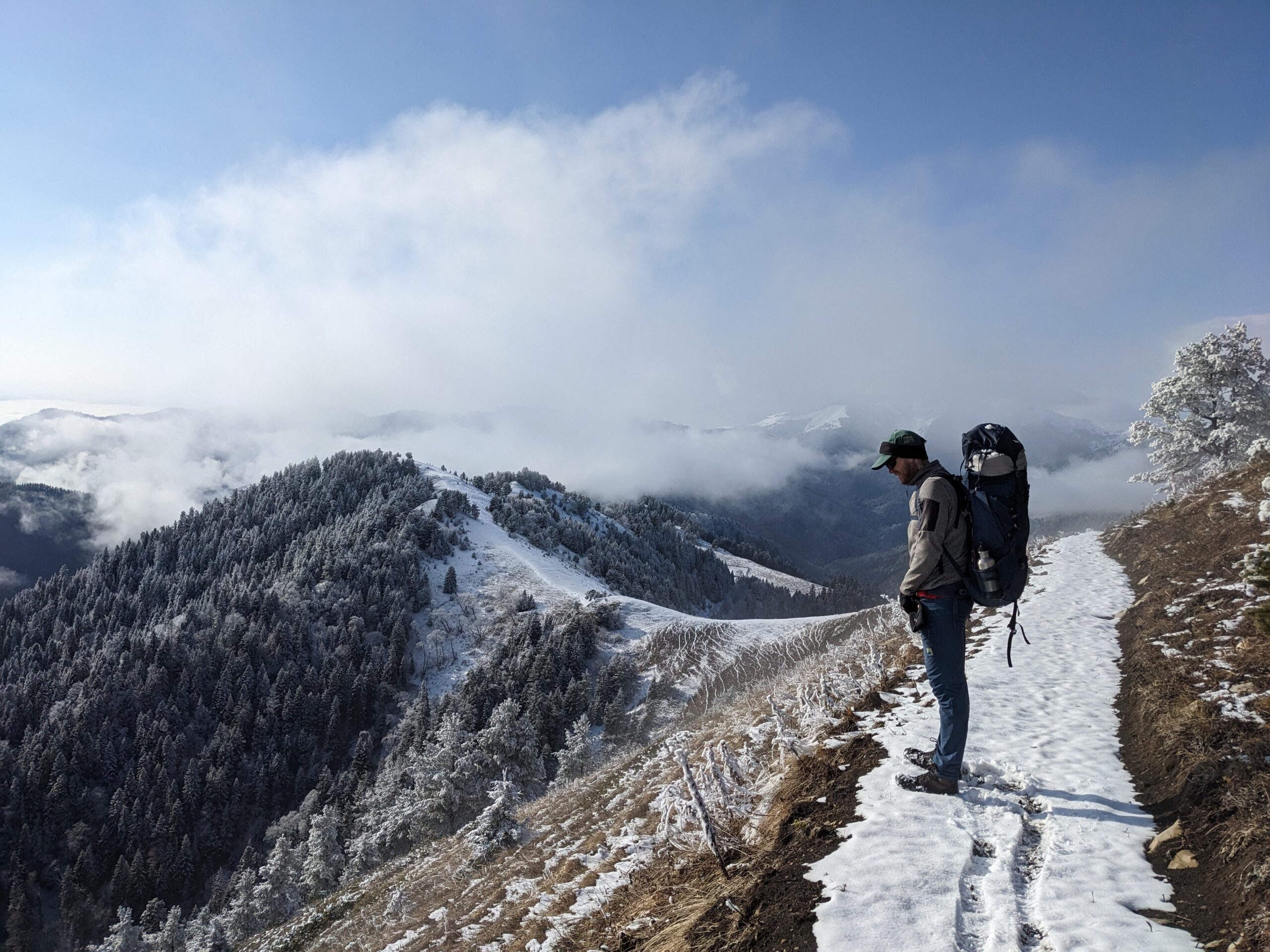
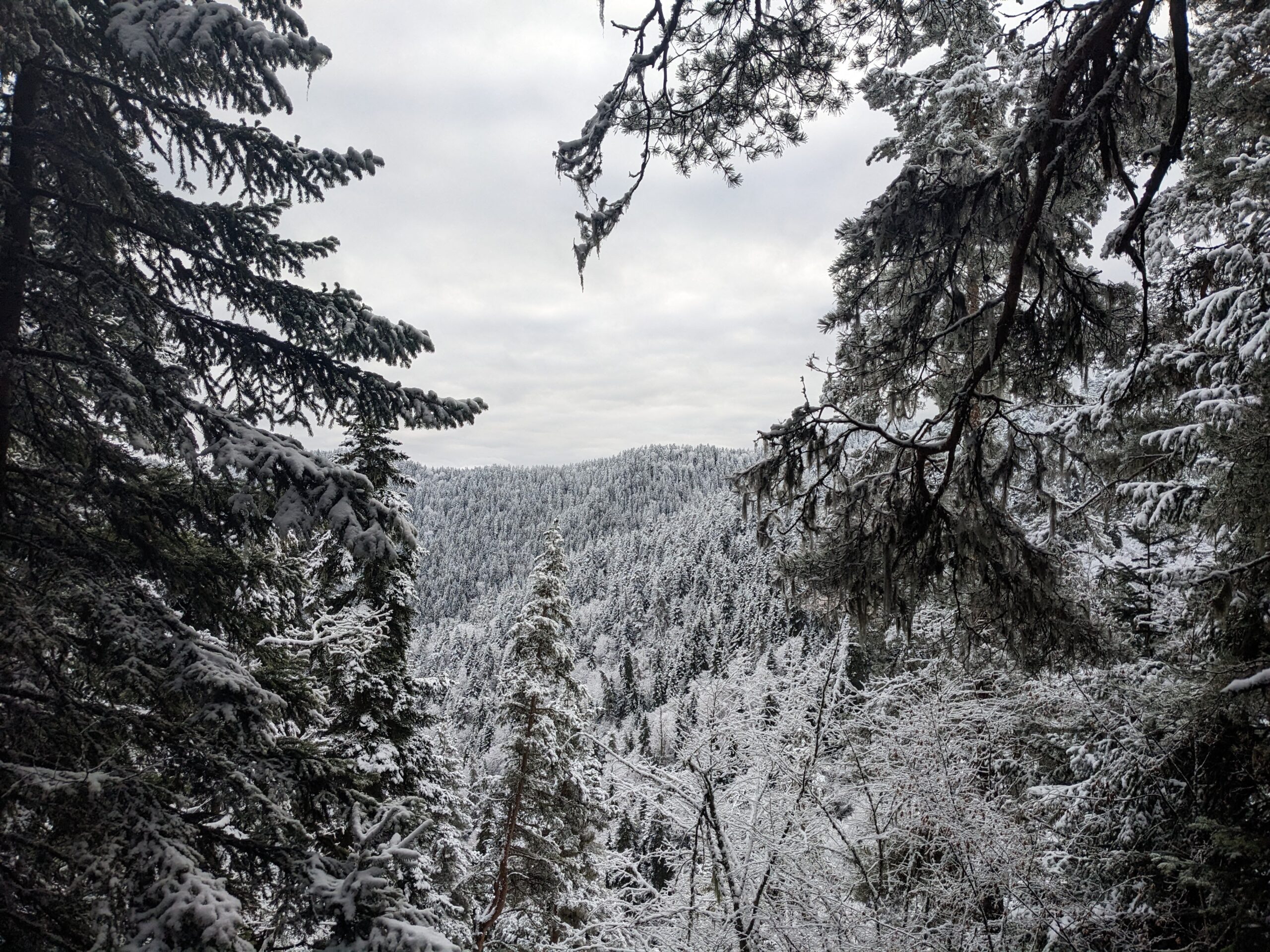
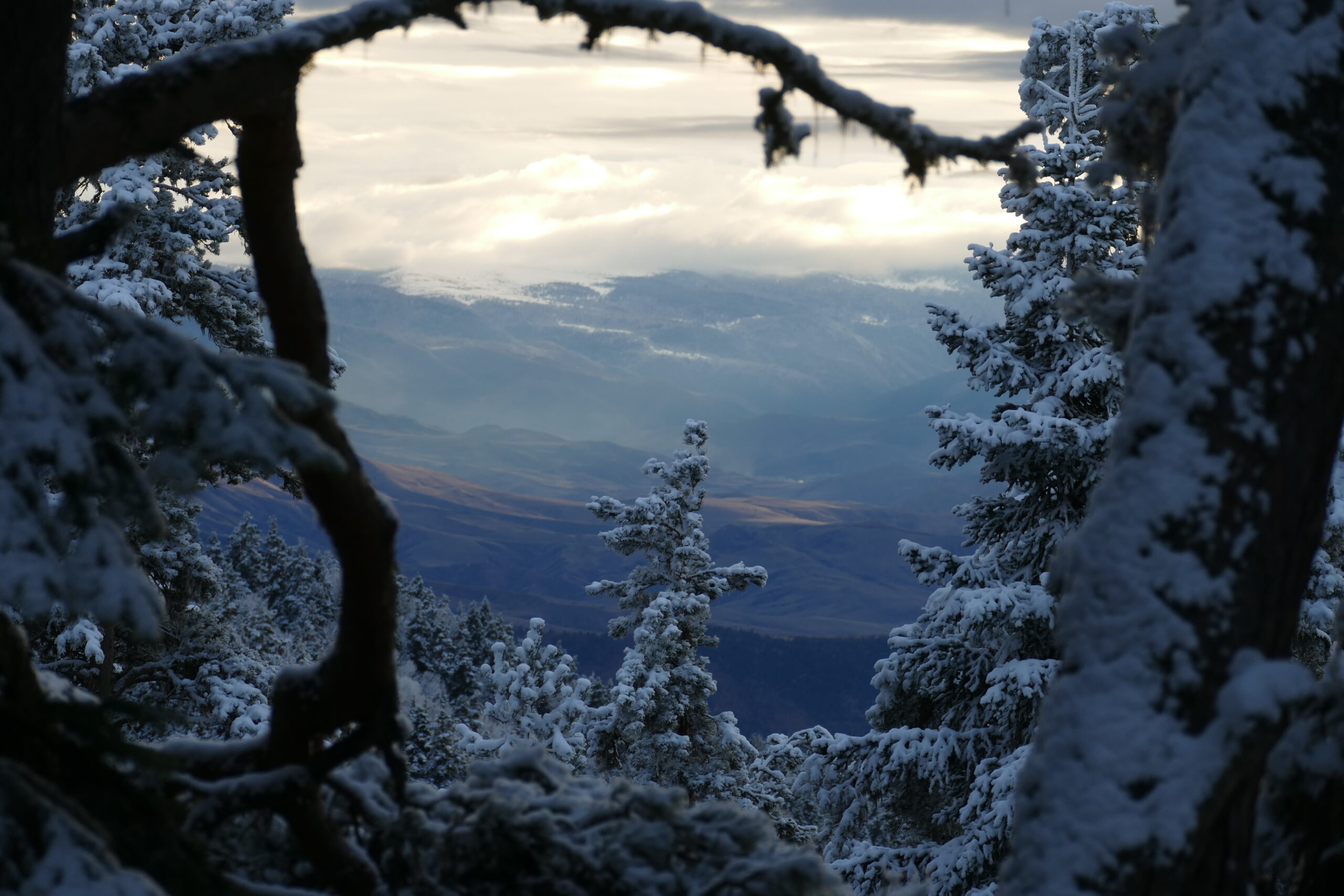
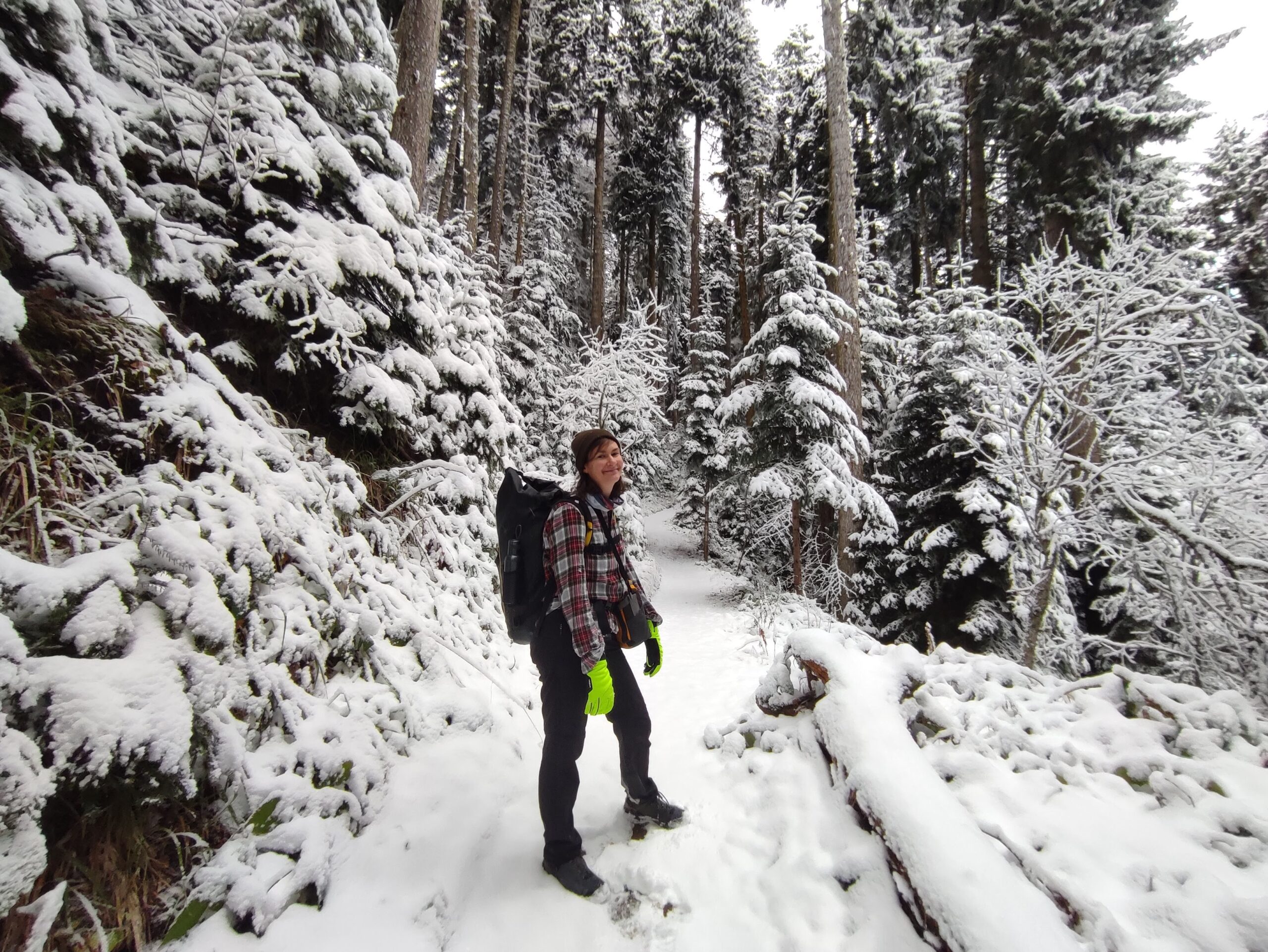
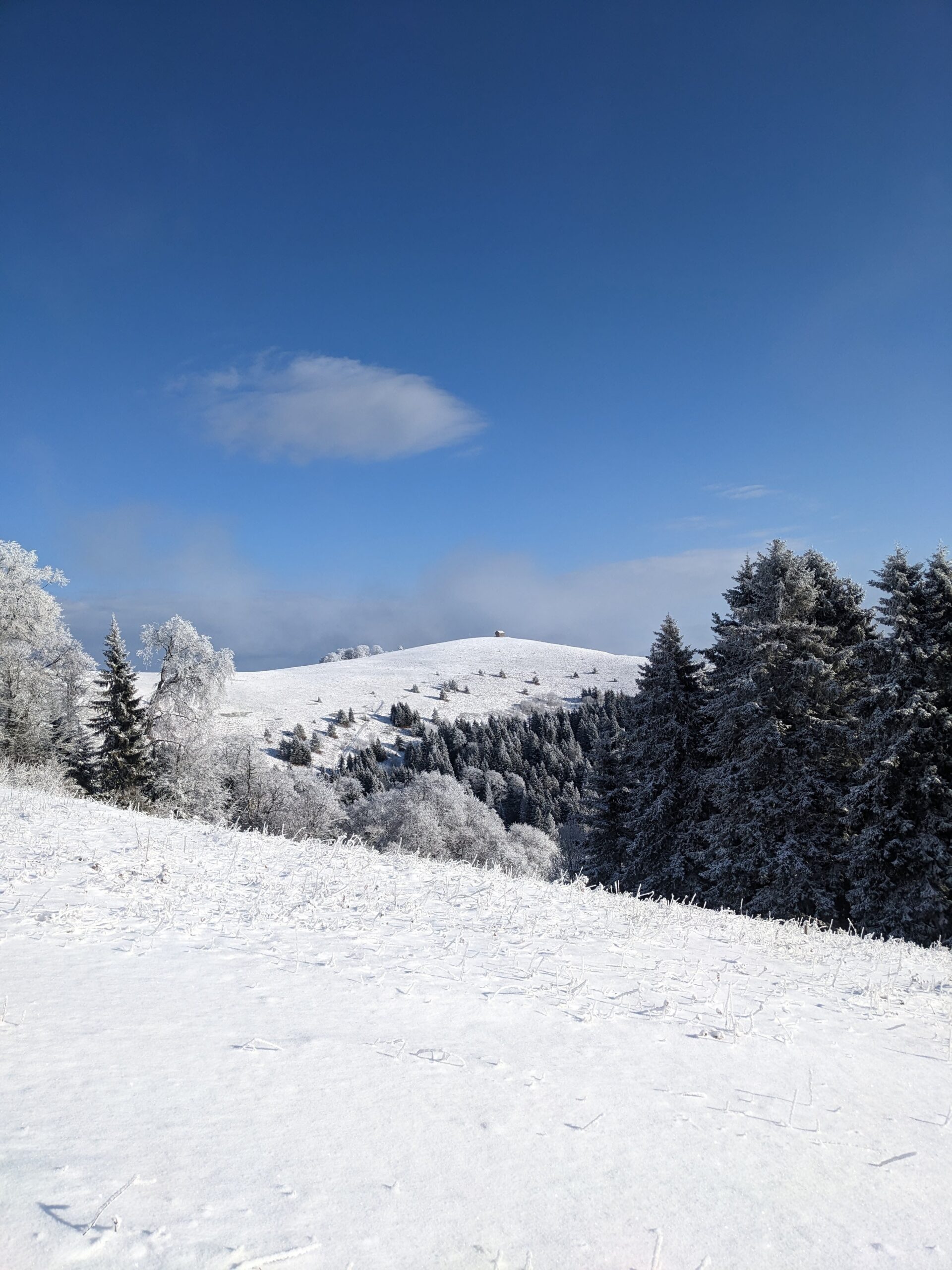
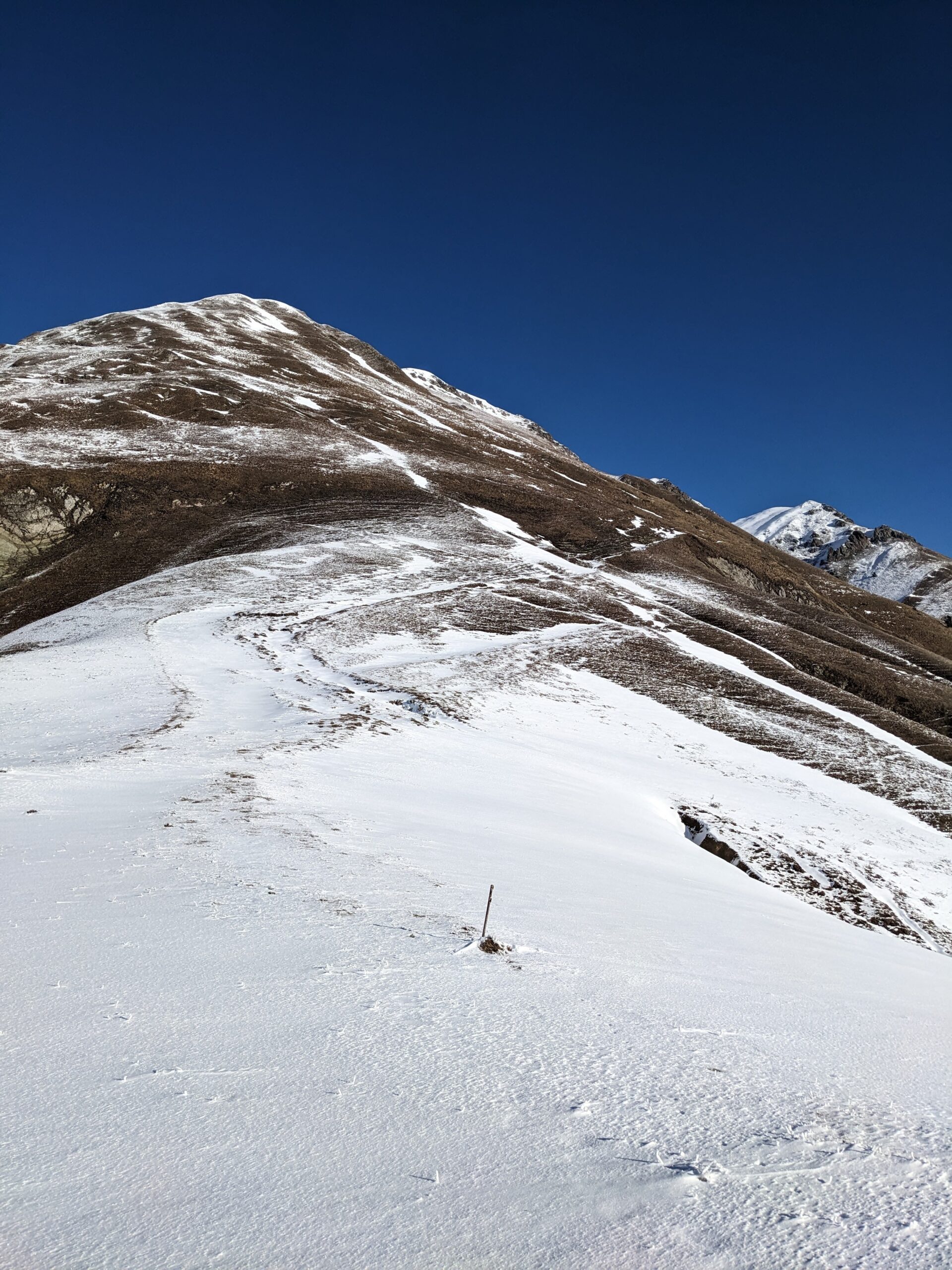
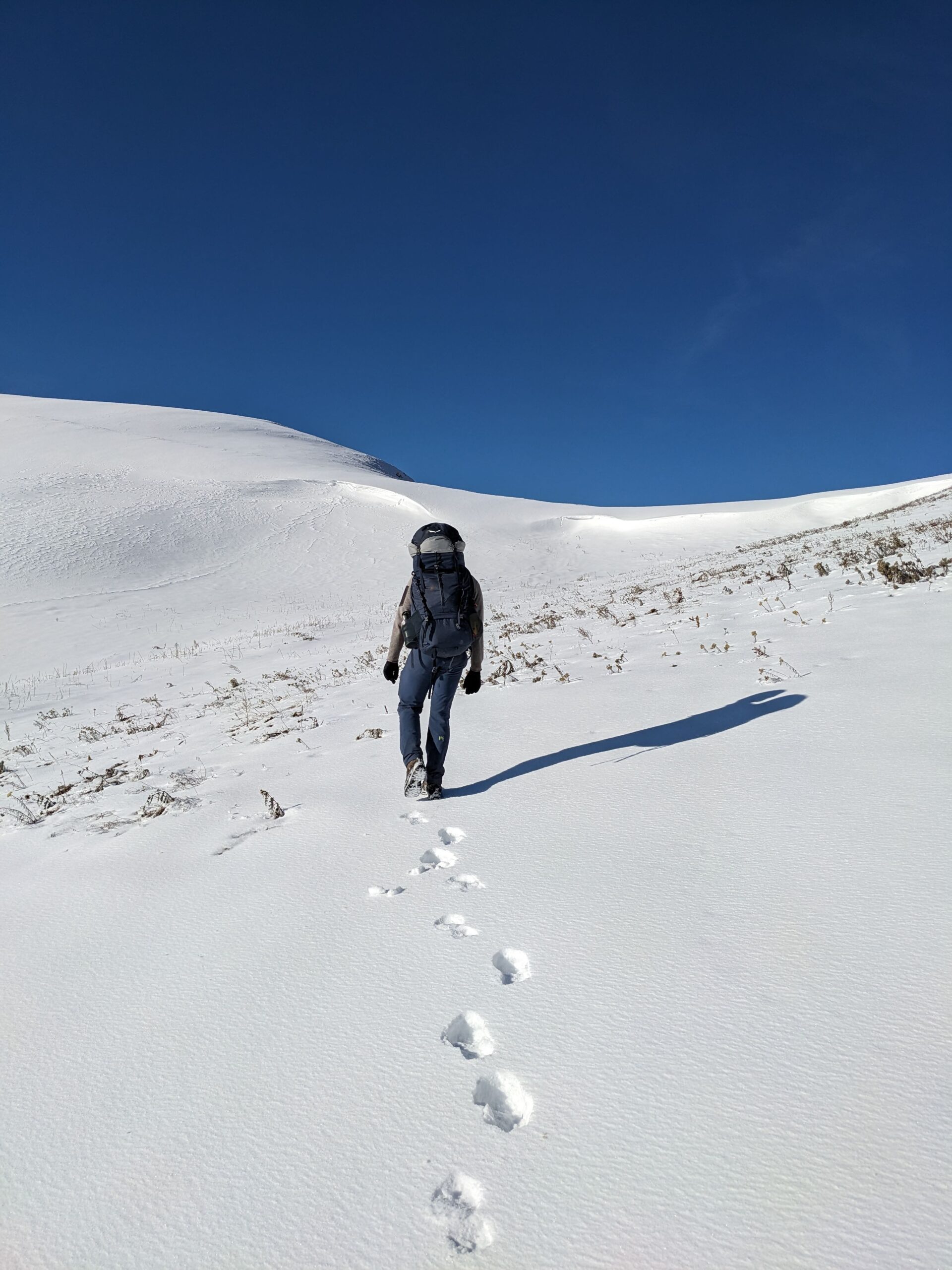
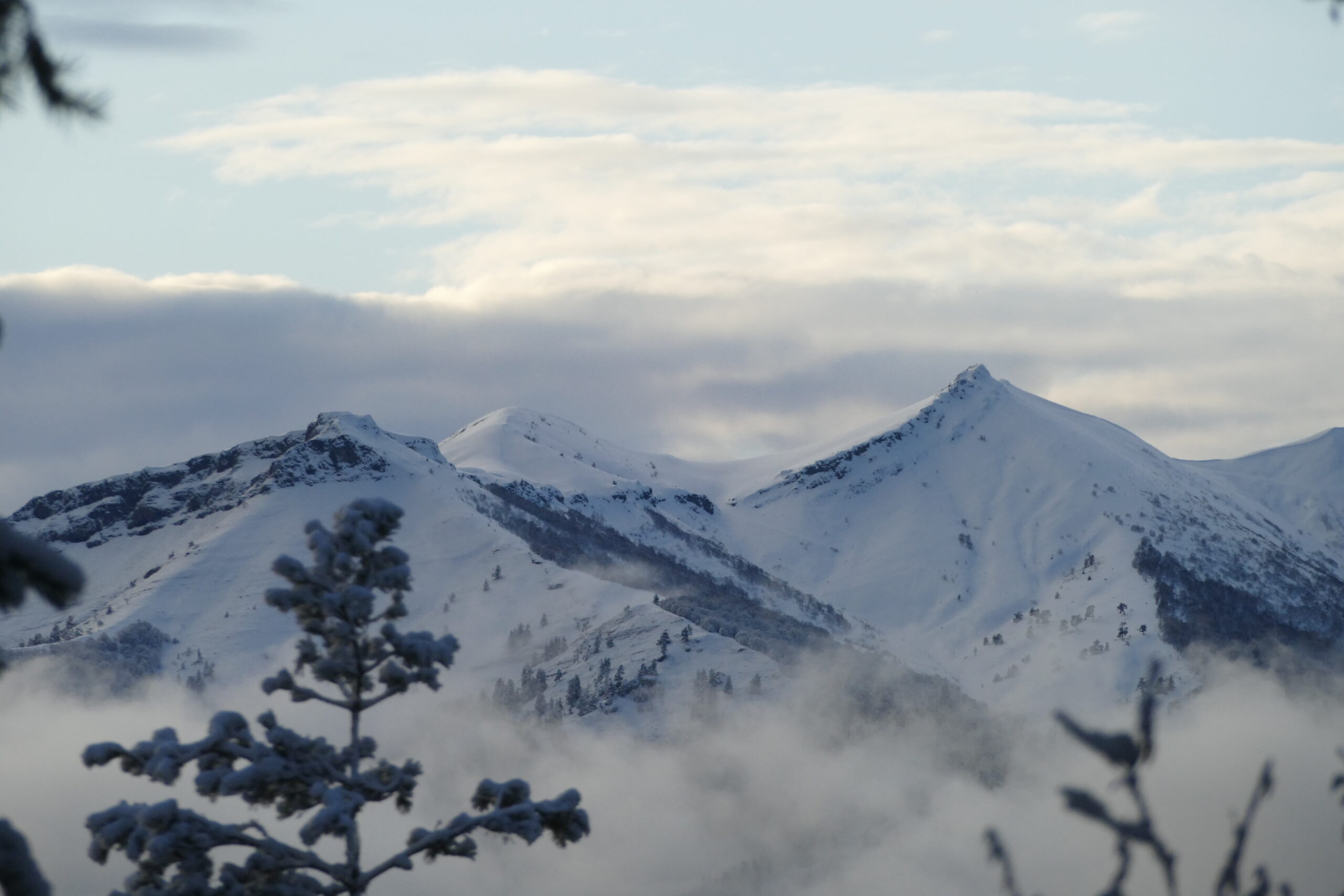

Pingback: How Lagodekhi wants to end poaching - biking4biodiversity.org